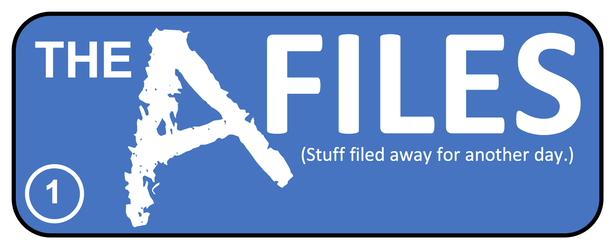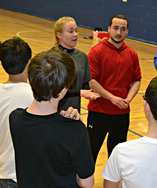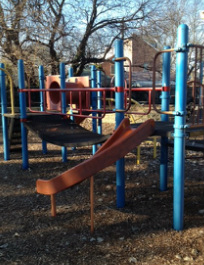I wasn't feeling 100% about simply typing them up in short form. So, how about we (meaning you) decode them?! What is "decoding", you might be asking? Well, in a nutshell, it's taking an activity in short form and putting it into long form. Reading a summary and then writing it out in a way that someone new to team building could read and lead.
Needs & Numbers: One deck of standard playing cards for every 5 to 7 players.
Description: Get into smaller groups of 5 to 7 - each group gets a deck of cards. Within each group, deal out the cards and no one looks at them. Go around the circle and have everyone say his/her name (if needed). Everyone has his/her pile of cards face down in front of them.
On a signal, at the same time, everyone turns over the top card of his/her pile. If anyone has a rank (number or letter) that matches with someone else, he/she says the name of the person that has the match. Whoever says the name first gets all the turned over cards from his/her group. These cards are added to the bottom of the "winner" pile.
This is My Nose (From a Laurie Frank Handout, year unknown)
Needs & Numbers: No props. 8 to 14 players.
Description: Circle up players. One starts by saying, "This is my nose" while pointing to a different body part (e.g., ear). The next player to the starters left points to another body part (e.g., knee) and says, "This is my ear" - saying the body part the first player pointed at. The next players in turn, while pointing to a new body part, will always say what the last player pointed at.
Passing Gas (From hand written notes, by Chris Cavert [way back in the day] attending a Karl Rohnke workshop)
Needs & Numbers: One balloon for each player and several permanent markers. (If you have a big group) Divide any size group into smaller groups of 16 to 20 players.
Description (decoded from my notes): This game can be done standing or sitting. Give each player a balloon [be mindful of latex allergies] to inflate to the size of their own cranium - and then tie off the opening. Pass around the permanent markers so each player can write his/her first name on their balloon. The Challenge: Time how fast all the balloons can get around the circle back to their owners - each player is required to pass along every other balloon in the circle. Play multiple rounds to achieve the fastest time.
Easy Line Up (From a hand written note, by Chris Cavert, attending an AEE workshop - no note about what workshop this was (??). Easy Line Up ended up in Challenge Energizers in the book, The EMPTY Bag, Cavert & Hammond)
Needs & Numbers: No props needed. 12 to 24 players.
Description: Line up in alphabetical order by first names with your eyes closed.
All the best,
Chris Cavert, Ed.D.









 RSS Feed
RSS Feed